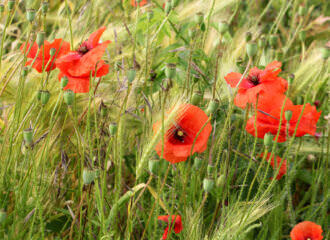
Non-natural ecosystems
Describing those habitats that are not natural to Wales.
Ecosystems are generally complex and difficult to define and, more often than not, comprise a wide range of habitats; typically combining semi-natural, agricultural and non-natural components. This part of the website describes the main habitat groups in Wales, and the more recognisable seral phases of those habitats, some of which are now confined to small fragments and located in areas unsuitable for human land-use. The more common reference states, i.e. states that arise through natural processes, and modified states, i.e. states that arise as a consequence of anthropogenic impacts, of the habitats are also described. These illustrate how different pressures on the landscape have impacted on the habitats over varying time frames and led to the habitats that we see today. The text provides identifies the main management pressures on each habitat and promotes the need for strategic restoration programmes that take into account the likely impact on the biodiversity associated with each habitat.

According to the latest agricultural statistics, the area of agricultural habitats in Wales is 1,677, 072 ha, which represents c.80% of the land area, which increases to 88% when common land is included. These habitats comprise a mix of arable habitats, permanent grassland, rough grazings, woodland, scrub and hedgerows. Hay meadows and pastures, which are also considered in the section on semi-natural habitat components, have been included here because they are essentially agricultural habitats and would not exist without the appropriate management regimes. The more common states of arable, grassland and hedgerow habitats are outlined in the sections below.

The vast majority of grassland habitats in Wales are agriculturally-improved and support little of biodiversity interest for either the fauna or flora. The loss of species-rich hay meadows from the Welsh landscape is well documented, with more than 95% being lost, primarily through conversion to silage and permanent pasture, since the 1950s. Of those that remain, many are degrading in quality, either through eutrophication (from neighboring fields and/or nitrogen depositions), or from neglect. Vast tracts of grassland in Wales are now virtually barren of biodiversity interest and it is now possible to drive around the Welsh countryside for hours in winter and not see a flock of thrushes, finches, larks or buntings such is the damage caused by decades of overgrazing, ploughing, reseeding, fertiliser treatments and pesticide applications.

It is estimated that some 50% of hedgrows in the UK have been removed since the early 1950s, primarily to maximise food production in the aftermath of World War II. The main hedgerow components in Wales are blackthorn (Prunus spinosa), hawthorn (Crataegus monogyna) and European gorse (Ulex europaeus), though a wide variety of other trees and shrubs also commonly contribute. Hedgerows play an important connectivity role in the UK countryside, providing links between ever-more fragmented patches of semi-natural habitat. They also provide an important early source of pollen and nectar for pollinators, important breeding and sheltering sites for birds and mammals, and an important source of autumn berries, particularly for migrating winter thrushes. For these reasons, the timing of any hedgerow management is critical. If trimming occurs in early spring or summer it will not only disturb nesting birds, it will also impact on the availability of spring flowers for pollinators and consequently the availability of autumn berries. In the not too distant past, this was considered the optimum time for hedgerow trimming. Currently, the favoured time for thrashing and trimming is in late summer/early autumn, removing the vast majority of fruits before the migrating winter thrushes arrive. This modified state is illustrated and described below.